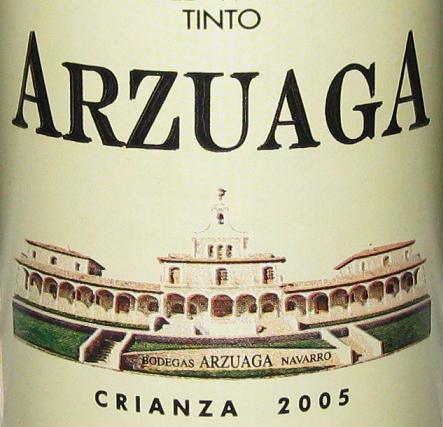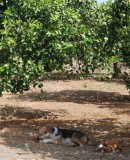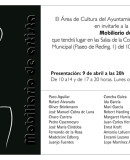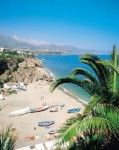The Arzuaga Story
The Arzuaga Story
AJ Linn
Every wine region has its top names. You only have to see what the wealthy Chinese are drinking to know that first-growth Bordeaux is still the favourite of favourites, and even though the clunky and outdated French classification system is generally accepted as being decades overdue for revision, vested interests keep it as it is, which in turn keeps Chinese billionaires quaffing Chateau Lafite and its ilk.
So while Spain’s Denomination of Origin system is run by too many jobs-for-the-boys Regulating Councils, there is a transparency that never prevents deserving bodegas from climbing up the scale, regardless of age or tradition. The wine world is awash to the point of over-supply with wine bloggers, wine scorers, critics, journalists, all trying to find some worthy new product that so far has not been spotted by their peers. This may cause a bad dose of over-information once you start drilling down into specific grape varieties or sub-categories, but at least it keeps wineries on their toes and sleeping on laurels is no longer an option.
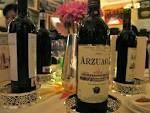 While the Rioja DO is unquestionably king of all it surveys, the barbarians are at the gates, and with 70 officially-classified wine regions, Spain’s bourgeoning and ever-moving undercurrent of new wines is slowly changing the old ways. We have seen how public taste in white wine adjusts, starting as it did with Penedés, shifting to Rioja, then to Rueda, and now edging towards such areas as Valdeorras and Rías Baixas.
While the Rioja DO is unquestionably king of all it surveys, the barbarians are at the gates, and with 70 officially-classified wine regions, Spain’s bourgeoning and ever-moving undercurrent of new wines is slowly changing the old ways. We have seen how public taste in white wine adjusts, starting as it did with Penedés, shifting to Rioja, then to Rueda, and now edging towards such areas as Valdeorras and Rías Baixas.
Ninety percent of red wine drinkers make a conscious choice between Rioja and Ribera del Duero, with ne’ery a Toro or Somontano within spitting distance, so if you can afford to get on board either of these first-class wine trains, why not? Wine is big business, and the plummeting consumption in wine-producing countries is happily more than compensated for by new markets. Of course, underneath the wealthy wine aficionado in these countries whose choice is dictated by the size of his bank balance, there are increasing signs that the middle-drinking classes, for want of a better term, are not conditioned to choosing wine by regional names, but solely on quality. This tendency is enormously encouraging for newer regions that cannot get the same acceptance in the Old World because of rooted prejudice.
When Florentino Arzuaga, of Basque descent, wanted to diversify his catering business in the early ‘90s, he homed in unerringly on Ribera del Duero. Neither the most beautiful region nor the easiest to make wine, it was unquestionably headed for greater things. In one notable bad year so few grapes survived the spring frosts that the Regulating Council officially reduced the production per hectare from 7,000 to 4,000 kilos, in a calculated attempt to discourage producers from pressing the grapes too much. Had they not resisted the temptation it would have resulted in inferior wine and therefore damage to the area’s reputation. The local grape is known as tinta del país, which everywhere else is known as tempranillo, although the much-vaunted Vega Sicilia wines come from a vineyard planted in 1864 with cabernet sauvignon, merlot and malbec vines brought from France. The rise of the region has been spectacular and even a relative newcomer like Arzuaga had no problem becoming one of its star performers in just two decades. Of course, the quality of the wines has something to do with it, and while the bodega’s annual production is around a million bottles, it is a quality product
Today Florentino still plays an active role, but the running of the winery is down to son Ignacio. Daughter Amaya is an internationally-recognised fashion designer based in Madrid, and has a wine named after her. Florentino spent the early years establishing the brand and ensuring that it got into Ribera’s top ten, but it is now Ignacio’s responsibility to keep up the momentum. He spends five months of the year travelling, and even when at home spends most of his time with clients and visitors. Apart from a very comfortable 5-star hotel next to the Bodega with a spa facility that specialises in vinotherapy, the bodega’s restaurant is one of the best in the area. If you drag yourself away from these beguiling home comforts, you can watch the wild boar and deer running wild on more remote parts of the 1,350-hectare estate.
The usual range of wines, starting with young reds, up to crianzas, to reservas, gran reservas and reservas especiales, is not missing, and the gratifying thing is that as a producer of wines that regularly get top awards both at home and internationally, the prices are competitive. With landmark wines such as Arzuaga Gran Reserva, Gran Reserva Especial, La Planta (young oaked), Arzuaga Crianza, and the white Fan D.Oro chardonnay, starting at ten euros – but up to €60 for the Reserva Especial and still great value – it is hardly surprising that export sales are rising year on year.
Disclaimer: The views, opinions and positions expressed within this guest article are those of the author AJ Linn alone and do not represent those of the Marbella Marbella website. The accuracy, completeness and validity of any statements made within this article are not guaranteed. We accept no liability for any errors, omissions or representations. The copyright of this content belongs to AJ Linn and any liability with regards to infringement of intellectual property rights remains with the author.

